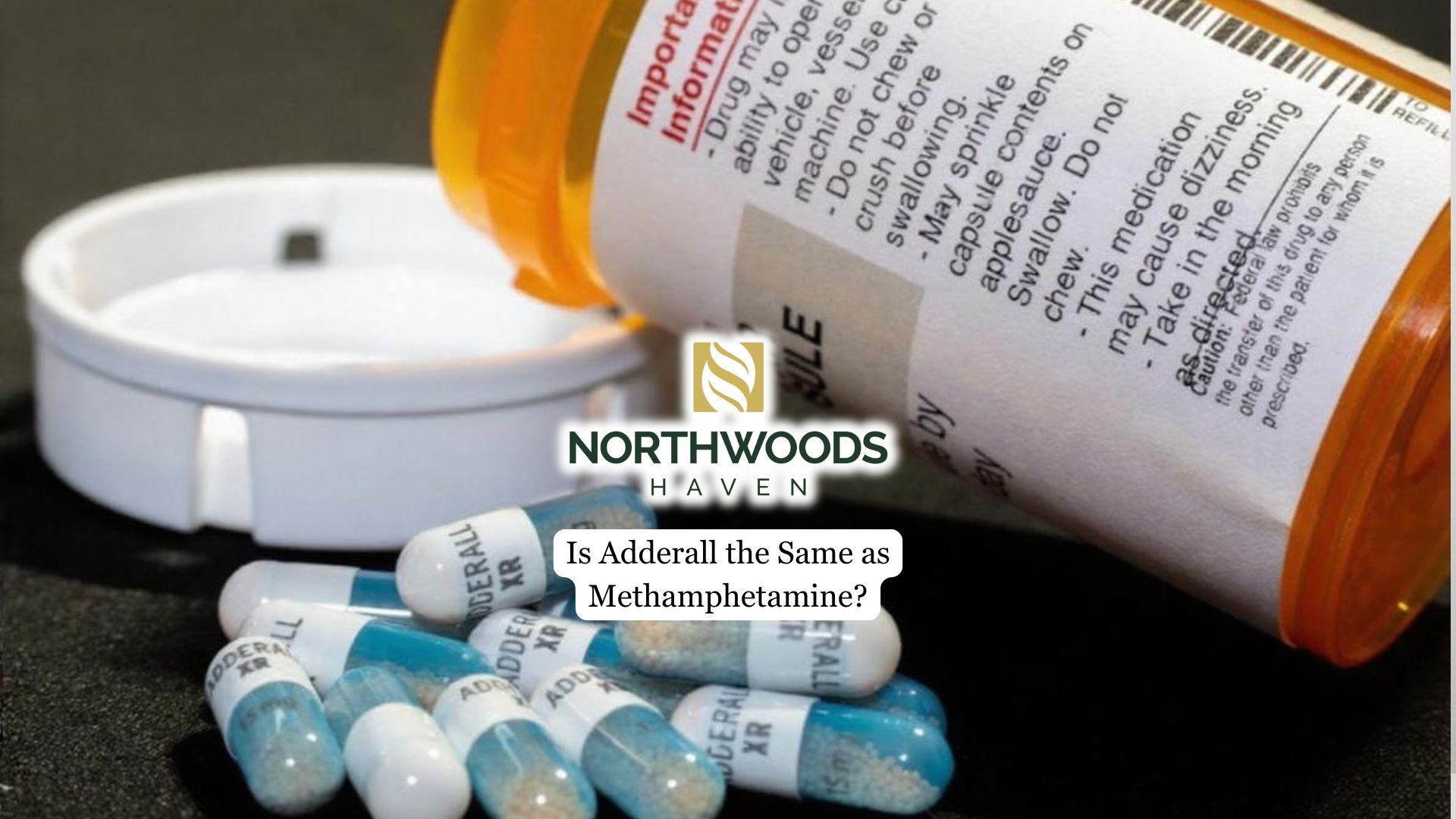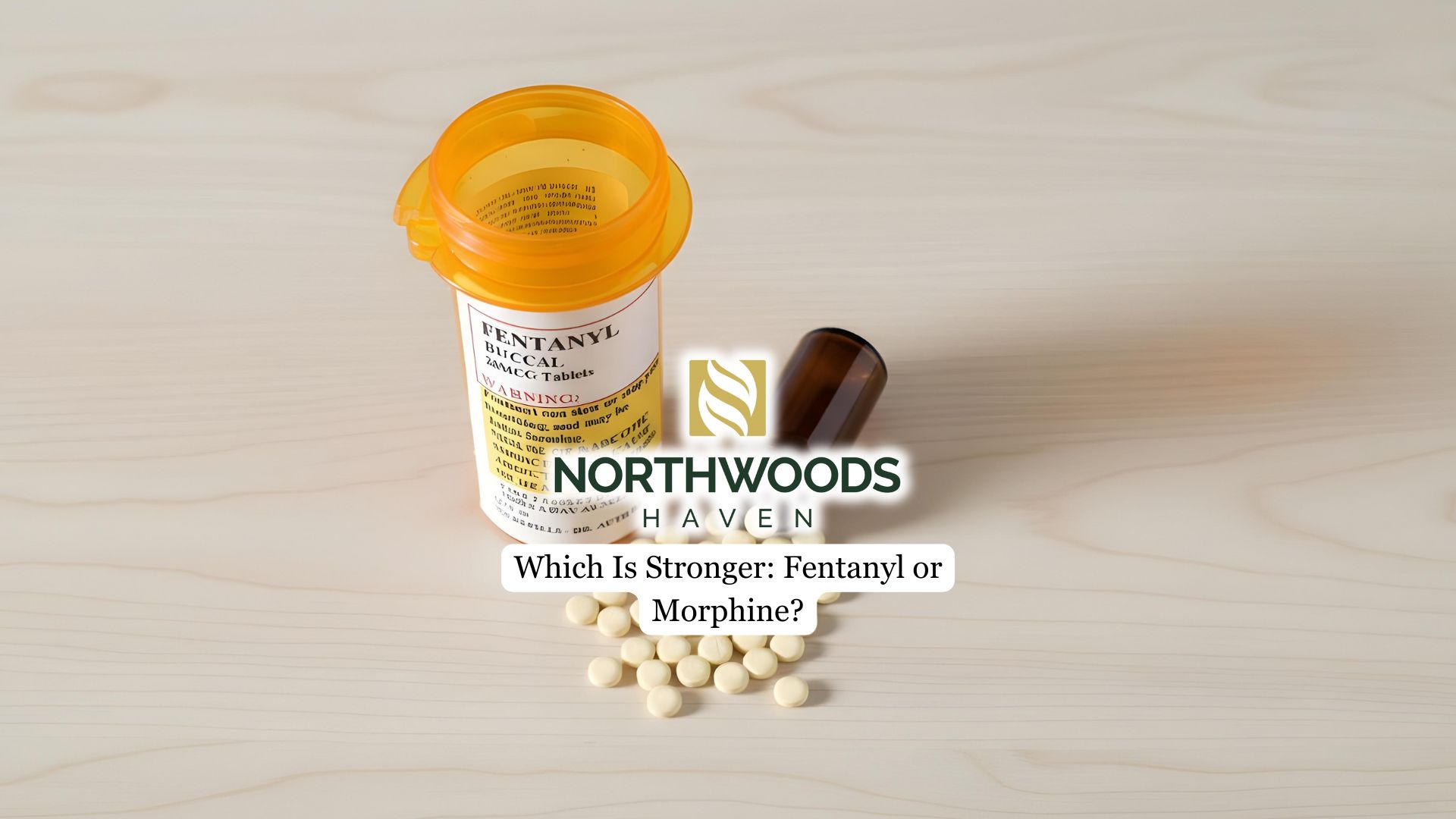The rise in stimulant prescriptions and the ongoing opioid and methamphetamine crises have led many to wonder if Adderall is the same as methamphetamine. While these two drugs share certain similarities, they are not identical.
This article will break down the key differences and similarities between Adderall and methamphetamine, including their chemical structures, medical uses, effects on the brain, and potential for abuse. By understanding how these substances compare, readers can make more informed decisions and recognize the risks associated with misuse, especially in a time when stimulant medications are more accessible than ever.
Comparing Adderall and Methamphetamine
While the two drugs have similarities, there are also some major differences. However, both have the same potential for dependence and addiction.
Individuals who find themselves abusing Adderall or methamphetamines should seek help from a professional drug addiction treatment center. At Northwoods Haven Recovery in Minneapolis, MN, we offer specialized outpatient programs for those struggling with stimulant misuse, providing focused care and support for lasting recovery.
What Is Adderall?
Adderall is a prescription medication made up of a combination of amphetamine salts, specifically, dextroamphetamine and amphetamine. Like Ritalin, it is most commonly prescribed for ADHD (attention-deficit/hyperactivity disorder) and narcolepsy. As a central nervous system stimulant, Adderall works by increasing the levels of dopamine and norepinephrine in the brain. When used as directed under medical supervision, Adderall can improve focus, attention, and impulse control in patients with ADHD.
Adderall is classified as a Schedule II controlled substance, reflecting its medical utility as well as its potential for abuse and dependence. It is typically taken orally in tablet or capsule form and is regulated closely by healthcare professionals.
What Is Methamphetamine?
Methamphetamine, often referred to as meth or crystal meth, is also a powerful central nervous system stimulant. While there is a legal, pharmaceutical form of methamphetamine (Desoxyn) that may be prescribed in rare cases for ADHD or obesity, most methamphetamine use in the United States and other countries is illicit and associated with significant health risks.
Methamphetamine is chemically similar to amphetamine but has an additional methyl group in its structure, which allows it to cross the blood-brain barrier more rapidly and makes it more potent. Meth is commonly abused recreationally and can be smoked, snorted, injected, or taken orally, leading to intense euphoria, rapid addiction, and severe physical and mental health consequences.
Similarities Between Adderall and Methamphetamine
- Both are central nervous system stimulants.
- Both increase dopamine and norepinephrine levels, resulting in enhanced focus and alertness.
- Both are classified as Schedule II controlled substances, meaning they have recognized medical uses but also a high potential for abuse and dependence.
- Both can be addictive, especially when misused or taken in higher-than-prescribed doses.
Key Differences
Potency and Effects
Methamphetamine is significantly more potent than Adderall and produces a more intense and longer-lasting high. While both drugs can cause euphoria, meth’s effects are much more extreme and dangerous, often leading to rapid development of addiction and severe health consequences.

Medical Use and Supervision
Adderall is a legal, FDA-approved prescription medication used under strict medical supervision. Methamphetamine, in contrast, is rarely prescribed and is most often encountered as an illegal street drug with no medical oversight.
Methods of Use
Adderall is taken orally in controlled doses. Illicit methamphetamine can be smoked, injected, snorted, or swallowed, which increases its abuse potential and risk for harm.
Health Risks and Side Effects
Adderall, when used as prescribed, can cause side effects such as increased heart rate, insomnia, anxiety, and potential for addiction. Methamphetamine abuse, however, is associated with far more severe risks, including extreme weight loss, dental problems (“meth mouth”), skin sores, paranoia, aggression, brain damage, and even death. Meth is also much more likely to result in overdose and long-term, irreversible harm.
Misconceptions and Dangers
The close chemical relationship between Adderall and methamphetamine, along with their similar effects at low doses, often leads to the misconception that they are essentially the same drug. However, the differences in potency, method of administration, medical use, and risk profile are significant.
Chronic or high-dose use of Adderall may also result in nerve cell damage and cognitive decline. Long-term methamphetamine use is associated with permanent damage to the heart and brain, severe dental problems, malnutrition, psychotic symptoms that can persist for months or years, and a greatly increased risk of stroke, heart attack, and death.
Both substances carry a risk of overdose, especially when combined with other drugs, and methamphetamine use is further linked to infectious diseases when injected and to severe social and economic consequences.
Final Thoughts from Northwoods Haven
Adderall and methamphetamine are related but distinct stimulants. Adderall is a prescription medication used to treat ADHD and narcolepsy under medical supervision, while methamphetamine is a much more potent and dangerous drug most often encountered in illegal contexts. Although both drugs carry risks, methamphetamine’s potential for addiction and severe health consequences is far greater.
At Northwoods Haven, we realize that even prescription medications such as Adderall can be misused, leading to dependency and disruption in everyday life. Our drug rehab programs in Minneapolis help individuals overcome stimulant misuse by providing personalized care, education, and ongoing support, guiding each person toward lasting recovery and a healthier, more stable future.



